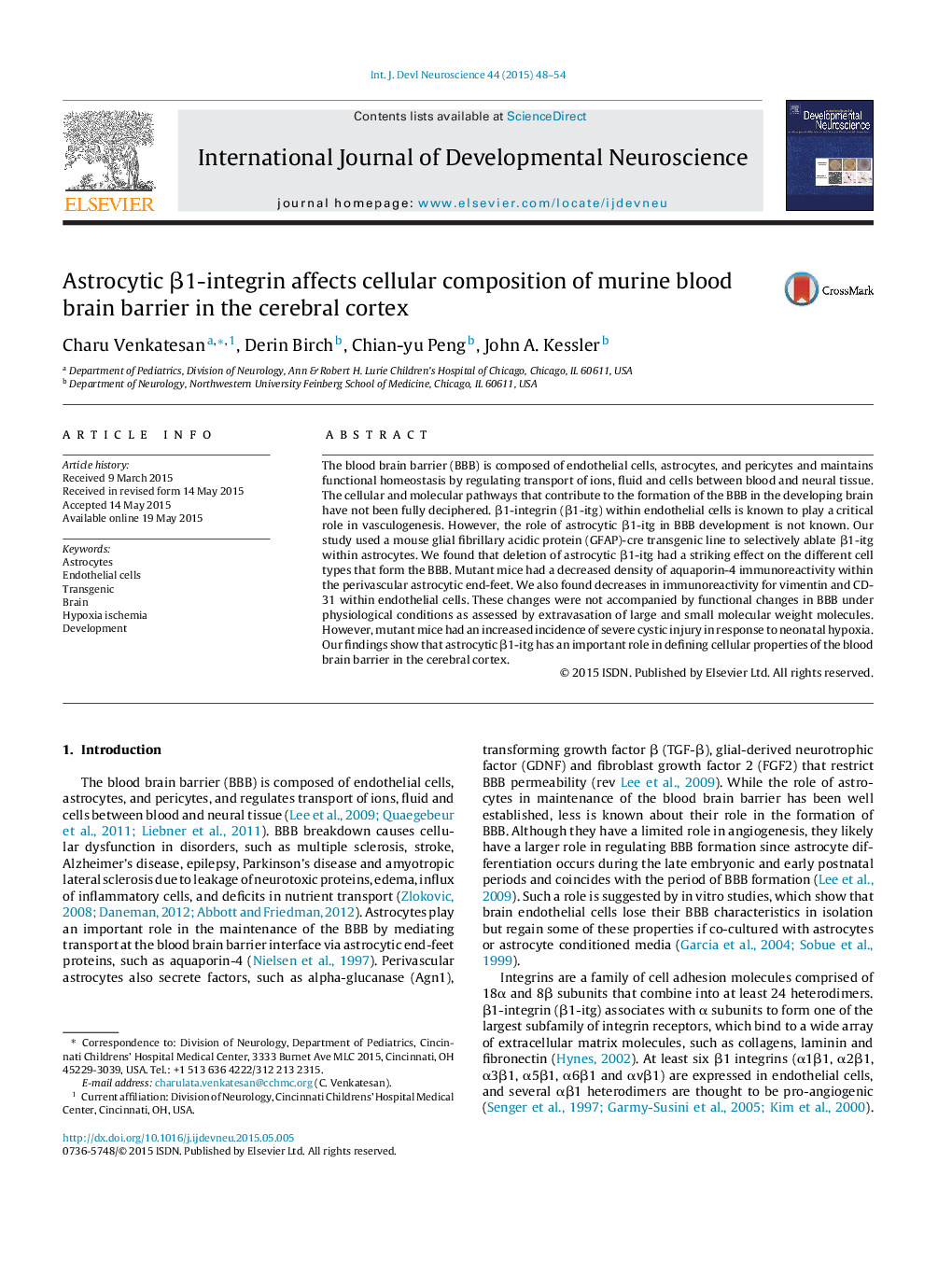| Article ID | Journal | Published Year | Pages | File Type |
|---|---|---|---|---|
| 2785846 | International Journal of Developmental Neuroscience | 2015 | 7 Pages |
•This study used a mouse glial fibrillary acidic protein (GFAP)-cre transgenic line to selectively ablate β1-itg within astrocytes.•This study found that mutant mice had a decreased density of aquaporin-4 immunoreactivity within the perivascular astrocytic end-feet and vimentin and CD-31 immunoreactivity within endothelial cells.•These changes were not accompanied by functional changes in BBB in the uninjured brain as assessed by extravasation of large and small molecular weight molecules.•Mutant mice with selective ablation of β1-itg within astrocytes had an increased incidence of severe cystic injury in response to neonatal hypoxia.
The blood brain barrier (BBB) is composed of endothelial cells, astrocytes, and pericytes and maintains functional homeostasis by regulating transport of ions, fluid and cells between blood and neural tissue. The cellular and molecular pathways that contribute to the formation of the BBB in the developing brain have not been fully deciphered. β1-integrin (β1-itg) within endothelial cells is known to play a critical role in vasculogenesis. However, the role of astrocytic β1-itg in BBB development is not known. Our study used a mouse glial fibrillary acidic protein (GFAP)-cre transgenic line to selectively ablate β1-itg within astrocytes. We found that deletion of astrocytic β1-itg had a striking effect on the different cell types that form the BBB. Mutant mice had a decreased density of aquaporin-4 immunoreactivity within the perivascular astrocytic end-feet. We also found decreases in immunoreactivity for vimentin and CD-31 within endothelial cells. These changes were not accompanied by functional changes in BBB under physiological conditions as assessed by extravasation of large and small molecular weight molecules. However, mutant mice had an increased incidence of severe cystic injury in response to neonatal hypoxia. Our findings show that astrocytic β1-itg has an important role in defining cellular properties of the blood brain barrier in the cerebral cortex.
